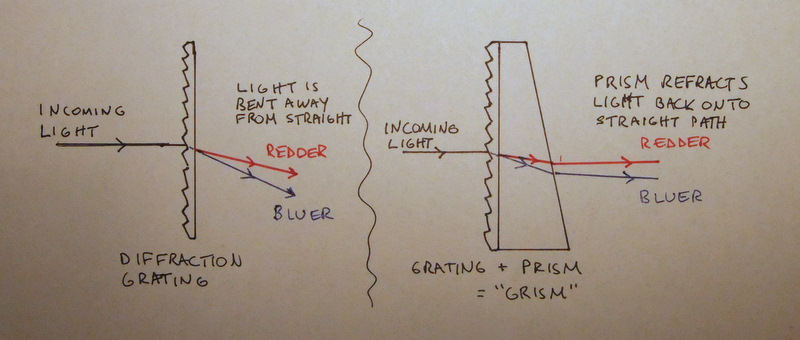
What is Grism?
The spectra of galaxies can provide interesting insight into the physical conditions, ages, and redshift of galaxies. Absorption and emission lines seen from spectra can identify the composition of a galaxy, and can therefore can give hints of what is going on inside the galaxy at the time of observation. For example, star-forming regions within galaxies contain HII emission lines, indicating that a galaxy is forming stars (more info here).

Grism spectroscopy provides a great way to study interesting features for many galaxies at a time. It utilizes "grisms" to study the electromagnetic spectrum of observed objects observed. The diffraction grating first disperses the light while the prism redirects the light back into the camera so they can be seen and analyzed.

What makes Grism ideal for this project?
Although CLEAR's purpose is to study the Ly-alpha emission from galaxies at z>6.5, the spectra taken from grisms can be used to study a variety of galactic features. Since hydrogen is so abundant in the universe, Balmer lines can determine a wide range of properties about galaxies such as distances, radial velocities. They can also help categorize galaxy clusters or identify unfamiliar objects. (talk more about what is being done with CLEAR data now... O2 and O3 lines?)
Additionally, Grism spectroscopy is very efficient for studying many objects at once. In the same way a filter will effect all light entering a detector, a grism is able to disperse and redirect all the light entering the detector. Because of this, images made with Hubble's WFC3 grism are able to show the dispersed spectrum for the entire field of view, making large samples much easier.
References
For a more detailed explanation of grism spectroscopy and it's significance in astronomy, please refer to the CANDELS Collaboration website page on Grism Spectroscopy, written by Benjamin Weiner.